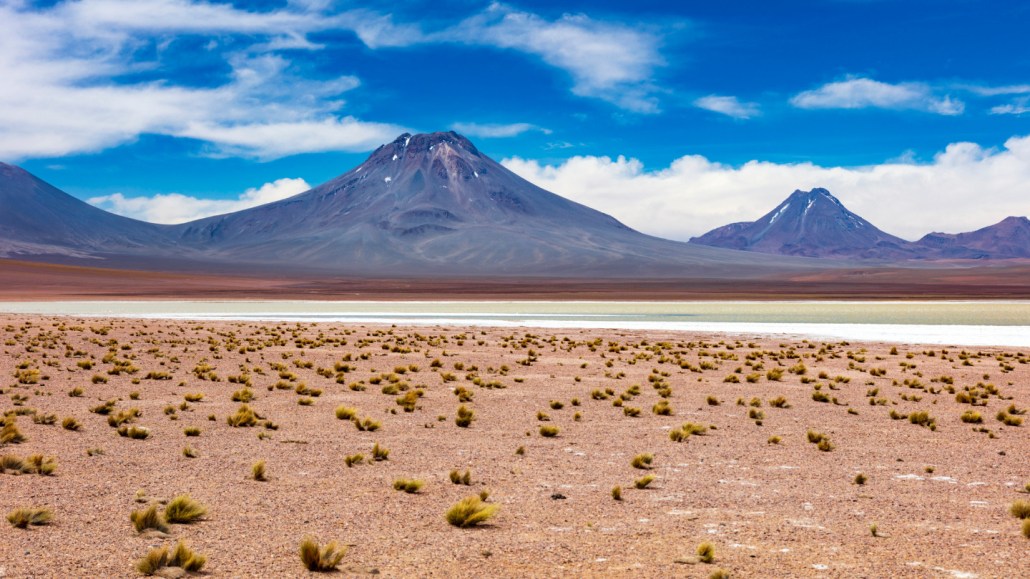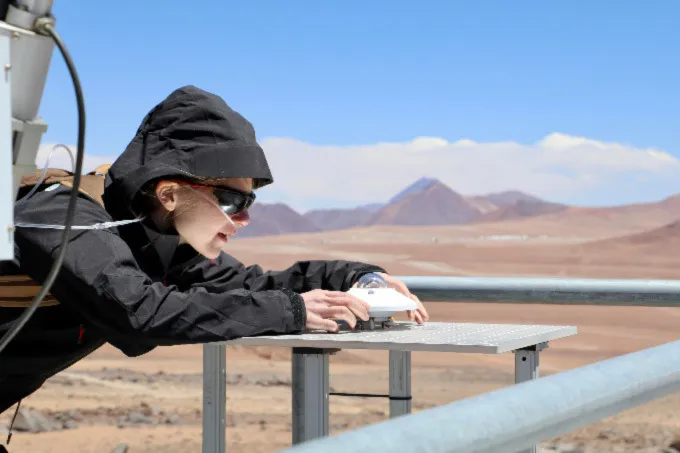The most intense sunlight on Earth can be found in the Atacama Desert
Sunlight in the South American desert can occasionally rival the solar intensity on Venus

The volcanoes Aguas Calientes and Acamarachi loom over Lejía Lake, a salt lake on the high-altitude Altiplano plateau in the Atacama Desert in northern Chile.
Pawel Toczynski/The Image Bank/Getty Images








